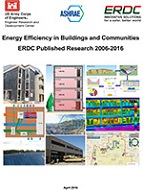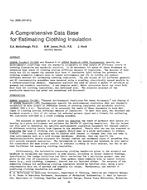This paper identifies and examines several formats or structures that could be used to create the next generation of more efficient energy codes and standards for commercial buildings. Pacific Northwest National Laboratory (PNNL) is funded by the U.S. Department of Energy’s Building Energy Codes Program (BECP) to provide technical support to the development of ANSI/ASHRAE/IES Standard 90.1. While the majority of PNNL’s ASHRAE Standard 90.1 support focuses on developing and evaluating new requirements, a portion of its work involves consideration of the format of energy standards. In its current working plan, the ASHRAE 90.1 committee has approved an energy goal of 50% improvement in Standard 90.1-2013 relative to Standard 90.1-2004, and will likely be considering higher improvement targets for future versions of the standard. To cost-effectively achieve the 50% goal in manner that can gain stakeholder consensus, formats other than prescriptive must be considered. Alternative formats that include reducing the reliance on prescriptive requirements may make it easier to achieve these aggressive efficiency levels in new codes and standards. The focus on energy code and standard formats is meant to explore approaches to presenting the criteria that will foster compliance, enhance verification, and stimulate innovation while saving energy in buildings. New formats may also make it easier for building designers and owners to design and build the levels of efficiency called for in the new codes and standards. This paper examines a number of potential formats and structures, including prescriptive, performance based (with sub-formats of performance equivalency and performance targets), capacity constraint based, and outcome based. The paper also discusses the pros and cons of each format from the viewpoint of code users and of code enforcers.
Product Details
- Published:
- 2013
- Number of Pages:
- 8
- File Size:
- 1 file , 450 KB
- Product Code(s):
- D-DA-13-C041
- Note:
- This product is unavailable in Russia, Belarus


